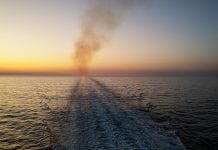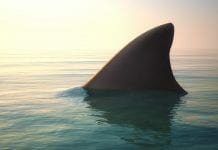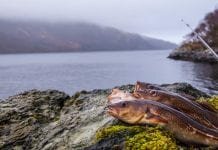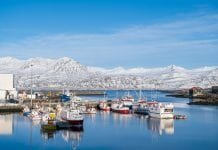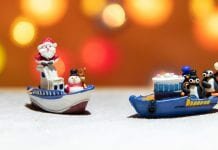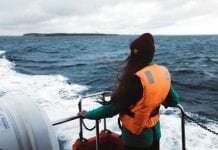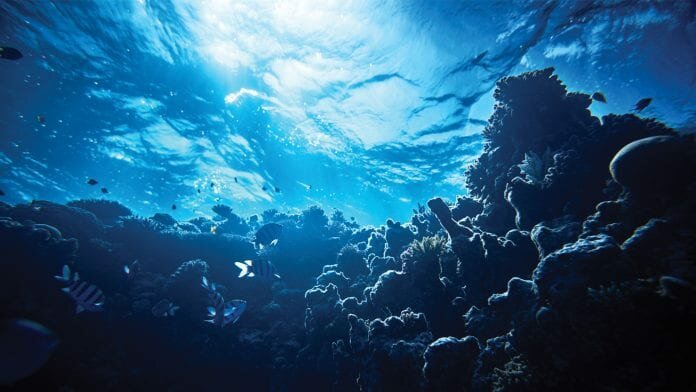
Government Europa speaks to Jean-Luc Solandt of the Marine Conservation Society about the importance of having well-managed Marine Protected Areas.
We live on one planet, 70% of which is made up of ocean – an ocean which is teeming with fascinating and beautiful marine life. However, many of the world’s seas have been, and continue to be under immense pressure – too many fish are being caught and industrialisation has degraded the ecosystem. Protection and recovery of our oceans has the potential to generate a number of environmental and economic benefits. We spoke to Jean-Luc Solandt from the Marine Conservation Society about the UK’s Marine Protected Areas and the positivity that can come from well managed ocean recovery – for the environment, ecosystems and the blue economy.
The Marine Conservation Society (MCS) states that of the current Marine Protected Areas (MPAs) in UK waters, only 5% can actually be considered as well managed. In your definition, what makes an area ‘well managed’ and what more can be done to better manage these areas going forward?
In dissecting that statistic it means that only 5% of Marine Protected Areas in our entire exclusive economic zone (EEZ) are protected from trawling and scallop dredging. The MPAs that protect the sea bed and sea floor ecological processes makes up an estimate of 17% of our total EEZ. Therefore, 5% of our MPAs equates to 0.9% of our entire EEZ that restricts trawling and scallop dredging – a pre-requisite for our consideration of ‘well-managed’ ‘protected’ areas.
The reason why we at the MCS say such a low figure is well managed is because in these protected areas – which are designed for seabed features and sea bed activities and communities – we cannot have dredging and trawling if we are to call them effective. In the perspective of our NGO, the negative externalities from these two activities outweigh any of the conservation/recovery we can expect – which is very little. I am an ecologist and I understand the ramifications of allowing these activities to continue in an ecosystem (think of forest clear-felling), and how that impairs the ability of said ecosystems to recover. Regulations are only present in a very small proportion of our MPAs and this is why we have such a low figure of ‘well-managed’ Marine Protected Areas.
How important is community engagement in the decision making of MPAs and how can we encourage more citizens to get involved in the protection and recovery of UK and OT oceans?
Communities are absolutely vital in the involvement of decision making processes of coastal Marine Protected Areas, and they are to a certain extent through the work of the Inshore Fisheries and Conservation Authorities (IFCAs); they were established by legislation in 2010 and have evolved from fishing-interest groups, put in place to essentially protect the interests of fishermen in the short-term, to groups where conservation (and ability to regulate fishing activities that affect conservation) is within their power. The ‘C’ of IFCAs stands for conservation. What they effectively do is balance conservation with fishers’ livelihoods. Some are more effective at others at ensuring long term recovery of our ecosystems in MPAs.
The IFCAs are staffed with conservationists, experts, data collectors, enforcement officials, etc. The staff have a science and enforcement role within their local Marine Protected Areas. They collaborate with universities, other regulators and sometimes NGOs. Advice from officers informs bylaws that are ‘voted’ on by committees that comprise of local politicians, fishers, scientists, and a few conservationists (who are in the minority).
The community side of conserving Marine Protected Areas is vital for inshore waters. This is because there are various interests and activities happening on coastlines like recreational fishing, angling, set netting, potting, bait digging all the way through to trawling and dredging and a whole array of activities that have an enormous impact on the marine environment. Fishing provides a lot of joy to individuals and recreational activities are still really vital, therefore IFCAs have the ability as a regulatory body to involve communities effectively in making decisions – provided they do it right.
In areas where IFCAs have either lacked capacity or the ability to convince their stakeholders that conservation is a good thing, the MCS has been able to help enable better community engagement through a long-standing project called Community Voice Method (CVM). The project has been a great tool in enabling the IFCAs to better promote management within Marine Protected Areas; and it provides a democratic approach for gathering the opinions of their multitude of stakeholders for future interventions. The way in which CVM works is that it gives each stakeholder position an equal voice through a film that is edited from many hours of one to one interviews. It balances all stakeholder interests, from small-scale local boat users to large-scale industry, giving an opportunity for all to heard whilst establishing shared values and positions.
Once conservation areas have had chance to recover, how can we ensure that we can then limit any future damage and is there anything that can be done to preserve the areas?
In my personal opinion we don’t have any because we have such poorly managed and enforced Marine Protected Areas. There are only three places in the UK where we have actually seen recovery happen: Lyme Bay, Arran Bay and Lundy Island. Lyme Bay is a significant site, it is big enough that it is protecting an entire ecosystem – rather than being worried about one species of coral, fish or sponge – it’s management to restrict trawls and dredgers cuts across a multitude of habitats.
We can prevent damage to Marine Protected Areas by ensuring every single vessel is being watched in real-time, and the technology to do this is now available (called Inshore Vessel Monitoring Schemes, or IVMS for short). The IFCAs of Devon and Dorset have implemented a measure whereby anyone fishing in their district has to have one of these devices on their wheel house so they can be seen. Simply put, the technology is basically a mobile phone on the wheel house which sends a text every minute (or so) which can be linked to where the phone is, the regulator can then monitor the vessel and its movement. One way that we can prevent the damage is to ensure that every vessel has one of these transponders fitted to it.
In terms of other industries, we need to ensure there are laws in place, and they are used. The EU laws to protect Marine Protected Areas are very effective – essentially the Habitats and Birds Directives, but these have not been implemented consistently by different UK regulators. An example of where the Habitats Directive has helped the UK coastlines is in Falmouth: There has been no dredge permit offered by the Marine Management Organisation to deepen the port for access by cruise ships. This is because we campaigned with local marine biologists using legal arguments to prevent a licence being permitted. Although use of these laws are helpful in preventing new, large scale industrial developments, they are less effective at preventing ongoing damage by fishing. This is because ‘fishing’ comprises of many (often) small-scale individual businesses that were fishing in the Marine Protected Areas before they were designated. Should each fishing boat be assessed individually? Probably. But this does not happen.
In light of the new proposals for an additional 41 Marine Protected Areas in UK waters: is this likely to have a great effect on ocean recovery or is there still more that needs to be done?
Given the 5% figure discussed earlier, it is very unlikely that we see much improvement in the state of the marine environment. It would be pessimistic to say that adding another 41 sites to the current network of sites will have no impact on the health of the sea, however, given the little progressive management of fisheries in sites, it may not be another generation until we really manage out the damage, and foster recovery. There is always a disjunct in what the government says in terms of its policy and delivery on the ground. The government needs to adopt a ‘whole site approach’ to managing Marine Protected Areas, which is what the majority of the public would believe to be logical. Currently, when you see trawling and dredging happening in an MPA that is protected for the seabed, we only protect the bits of sea bed that has not been trawled and which hosts those specifically beautiful bits of biodiversity – the majority of these areas tends to be areas upstanding hard reefs where the boats have never been able to get to. We need to move to an area in conservation which is about protection of entire ecosystems. Sand, mud, rubble and gravel areas need to recover.
How can recovery and protection of our seas and oceans, including the establishment of Marine Protected Areas, benefit the blue economy?
There are a lot of low impact human activities such as boating and pot fishing which causes a lot less collateral damage than trawling and dredging; in Lyme Bay the blue economy has been shown to improve where trawling and dredging has been prevented. It is difficult to quantify the ecosystem services that benefit from trawling closures, for example the recovery of seagrass beds and other habitats that act as a carbon sink, fish nurseries, and support wider biodiversity; or the maintenance and enhancement of low impact jobs, such as pot fishing or angling charters. Such evidence is separate, but often not combined to counter the ‘cost’ associated from removing trawlers. All of this impact should be quantified in terms of current use, past use, current extent, past ‘predicted’ extent, and the benefits to the ecosystem that a predicted recovery could offer society.
We need to replicate some of the metrics we’ve derived from terrestrial ecosystem services. For example, we know how much oxygen certain tree species provide us with, how many insects a mature oak can host, the pollination value (to commercial fruit crops) are available from meadows. Similar ecosystem services occur in the marine environment but we are not quantifying them. So that when government carries out an impact assessment of trawling livelihoods in a closed area compared to the potential for a seabed to recover in Marine Protected Areas, these metrics are not included: on paper the intervention (i.e. to ban seabed trawling) does not add up.
There is a lot of complexity on the sea bed and in order to prove the importance of recovery we need to be more sophisticated in our measurement, otherwise we will end up with this tragedy of comparing apples and pears when we are doing impact assessments.
A more in-depth analysis of Marine Protected Areas can be found in Jean-Luc Solandt’s research paper, A stocktake of England’s MPA network – taking a global perspective approach.
Dr Jean-Luc Solandt
Principal Specialist, Marine Protected Areas
Marine Conservation Society
+44 1989 561594
Tweet @JeanLucSol
https://www.researchgate.net/profile/Jean_Luc_Solandt


